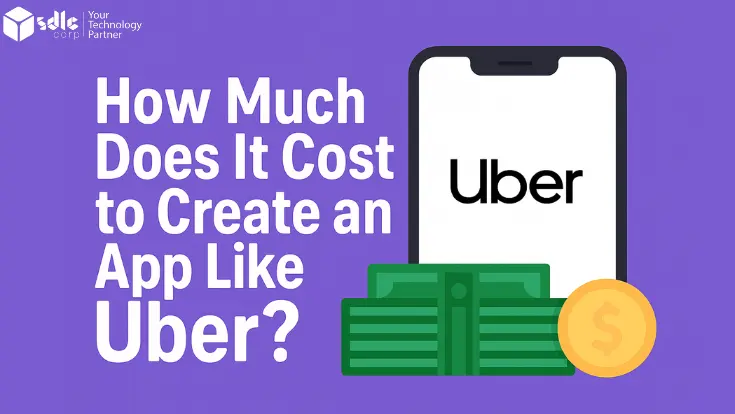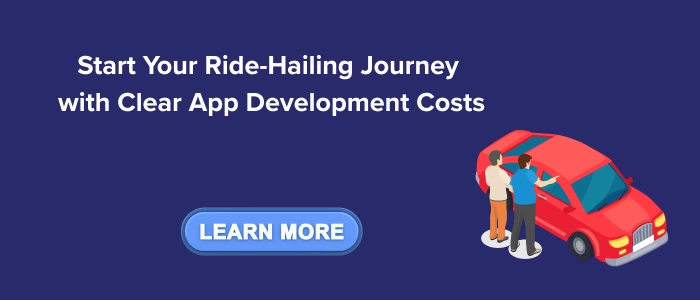The rise of ride-hailing services has transformed urban transportation globally, and Uber is the undisputed leader in this space. Entrepreneurs and startups often dream of building an app like Uber, but one of the first questions that arises is: How much does it cost to build an app like Uber? Understanding the Uber app development cost requires delving into various aspects such as features, development time, technology stack, and geographic factors. In this comprehensive guide, we’ll break down everything you need to know about the cost to develop an app like Uber and explore the factors that influence the final budget.
What Is an Uber Clone App?

Before we dive into the Uber clone app cost, let’s clarify what an Uber clone app entails. An Uber clone app is a replica of the Uber platform, providing similar ride-hailing functionality. It typically includes three main components:
- Passenger app: For customers to book rides, track drivers, and pay.
- Driver app: For drivers to receive ride requests, navigate, and manage earnings.
- Admin panel: To manage users, drivers, payments, and overall operations.
Developing these components with essential features impacts the overall taxi app development cost.
Key Features Affecting Uber App Development Cost

The price tag for an Uber-like app largely depends on the complexity and number of features you want to implement. Here are the must-have features influencing the ride-hailing app development price:
1. User Registration and Profiles
Secure sign-up and profile management for drivers and passengers.
2. GPS Tracking and Navigation
Real-time driver tracking and route optimization.
3. Ride Booking and Scheduling
Immediate and scheduled ride options.
4. Fare Calculation and Payment Integration
Dynamic pricing, fare estimates, and multiple payment options.
5. Ratings and Reviews
Feedback systems to ensure service quality.
6. Push Notifications
Alerts for booking confirmation, driver arrival, and promotions.
7. Ride History
Past trip details and receipts.
8. In-app Chat and Call
Direct communication between the driver and the passenger.
9. Admin Dashboard
Management tools for tracking rides, drivers, and payments.
Adding advanced features such as ride pooling, surge pricing, or multi-language support increases the budget for Uber-like app development.
Technology Stack Influencing Cost

The choice of technology influences the mobile app development cost for taxi apps significantly:
- Front-end development: Native apps (iOS, Android) vs. cross-platform development.
- Back-end development: Server infrastructure, database, APIs.
- Third-party integrations: Maps (Google Maps, Mapbox), payment gateways (Stripe, PayPal).
- Cloud services: Hosting and scalability considerations.
Native app development tends to be more expensive but offers better performance, while cross-platform solutions can save cost but might compromise on user experience.
Development Team and Location Impact on Cost

The cost to create an app like Uber also depends heavily on the geographic location of your development team:
Region | Average Hourly Rate (USD) |
North America | $100 – $250 |
Western Europe | $80 – $200 |
Eastern Europe | $30 – $80 |
India | $15 – $50 |
Southeast Asia | $20 – $60 |
Hiring a skilled development team from regions like India or Eastern Europe can drastically reduce the cost breakdown for Uber app development, but communication and timezone challenges should be considered.
Breakdown of Uber App Development Cost

Let’s break down the typical phases of app development and their estimated costs:
Phase | Estimated Hours | Estimated Cost (USD) |
Requirement Analysis | 80 – 100 | $3,000 – $8,000 |
UI/UX Design | 120 – 160 | $4,000 – $10,000 |
Frontend Development | 300 – 400 | $10,000 – $30,000 |
Backend Development | 400 – 500 | $12,000 – $40,000 |
Testing & QA | 100 – 150 | $4,000 – $10,000 |
Deployment & Launch | 40 – 60 | $1,500 – $5,000 |
Total Estimated Cost: $34,500 – $103,000 (varies by region and complexity)
This estimate covers the basic version of the app. Adding more features or supporting multiple platforms will increase the estimate to create an app like Uber.
Additional Costs to Consider

1. Maintenance and Updates
Post-launch support, bug fixes, and feature upgrades can cost 15-20% of the initial development budget annually.
2. Marketing and Customer Acquisition
Building an app like Uber requires significant investment in marketing to acquire drivers and users.
3. Legal and Compliance
Ensuring compliance with local transportation regulations and data protection laws can add to your costs.
4. Server and Hosting
Costs for cloud services and server maintenance scale with user growth.
How to Reduce Your Uber App Development Cost?

- Start with an MVP: Build a Minimum Viable Product with core features to test the market before scaling.
- Use ready-made Uber clone scripts: They save development time but might lack customization.
- Choose cross-platform frameworks: Save on developing separate iOS and Android apps.
- Outsource wisely: Select reliable teams with proven experience to avoid costly rework.
Why Choose Professional Developers Over DIY?

Many entrepreneurs attempt to use app builders to reduce costs, but for an app like Uber that requires complex real-time functionality, professional development ensures scalability, security, and a smooth user experience.
Conclusion
Developing an app like Uber is a significant investment. The Uber app development cost varies based on your business goals, feature complexity, and technology choices. However, with the right strategy, technology, and team, your ride-hailing app can be a profitable venture. Contact us SDLC CORP. we specialize in custom mobile app development and provide end-to-end solutions for building Uber-like apps.
FAQ's
What is the Average Cost to Build an App Like Uber?
The basic Uber clone app development cost ranges between $35,000 to $100,000, depending on features and location.
How Long Does It Take to Develop an Uber-like App?
Typically, development takes 4 to 6 months, including design, development, and testing.
Can I develop an Uber clone app for both Android and iOS?
Yes, but developing native apps for both platforms increases cost; cross-platform development is a cost-effective alternative.
What Technologies Are Used to Build Uber-like Apps?
Commonly used technologies include Swift or Kotlin for native apps, React Native or Flutter for cross-platform, Node.js or Django for backend, and Google Maps for navigation.
How to Monetize an Uber Clone App?
Through commissions on rides, surge pricing, subscription plans, or advertising.


















